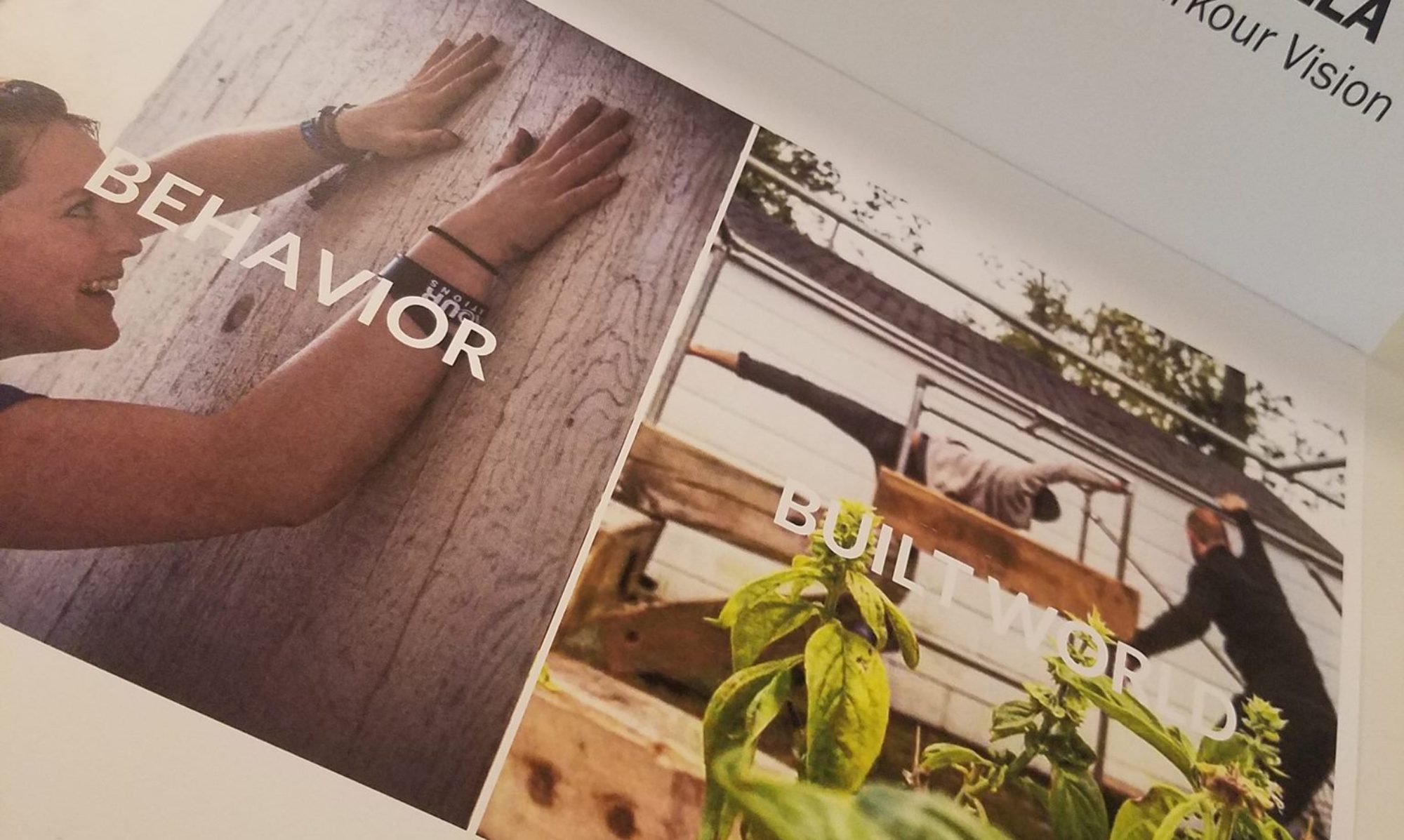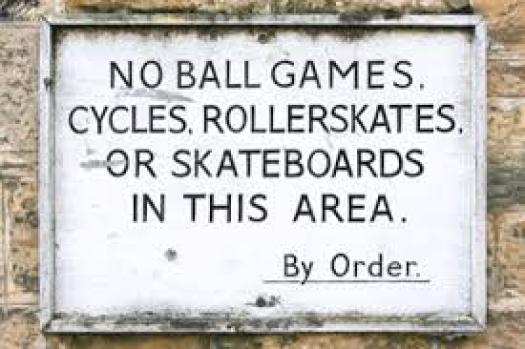For too long, we have treated play as a luxury that kids, as well as adults, could do without. But the time has come for us to recognize why play is worth defending: It is essential to leading a happy and healthy life.
— David Elkind
Did you know that the average american is most physically active at age 6, and by 19, about as sedentary as a 60 year old? Over the last ten years there has been a steady decline in participation in sports and physical activity among youth as well as the rise of obesity among teens and adults. Add to that — National data reveals a startling 30% of adults do not engage in any leisure time physical activity , with less than half meeting or exceeding recommendations.
To sum it up: As most people grow up they are either losing or leaving behind play and physical activity.
However, evidence clearly supports that movement and play are critical to life long, whole human health… not just for children, but teens, adults, and seniors as well. Beyond the physical benefits of strength, mobility, and dexterity, participation supports overall mental health. It has been shown to improve cognitive performance and learning, reduce the impact of stress, and support social and emotional development. It nurtures our confidence, curiosity, creativity, and sense of control. It brings us joy.
So if play is so important — why do we stop? The answer to that question is complex, and presents the problem we, as a community, need to solve together.
The Problem: Barriers to Play
There are major barriers to accessing and participating in physical activity and play. These include issues related to time, cost, location, and an individual social, emotional, and cultural context. To summarize a few of the largest, most robust issues:

COST
Inactivity has been shown to be directly linked to household income. Rising costs of equipment, league fees, gym memberships, and the costs associated with accessingquality coaching and learning tools all threaten participation.
TIME
We live in a non-stop world. Juggling work, school, and social schedules alongside long commuting times and other obligations often prevents us from fitting in time for play. Whats worse, we keep finding ways to cut play out. By 2017, over 30,000 schools in America eliminated recess to make more time for academics.
PHYSICAL ACCESS
Even if we have the money and time, physical access is the final hurdle.As the distance required to access play resources increases (fields, equipment, gyms, parks), participation declines — transportation is directly linked back to time and money. Additionally, many schools and cities have limited programs and services, making them fewer and farther in between.
SOCIAL, EMOTIONAL, CULTURAL ISSUES
Every individual brings a complex landscape of social, emotional, and cultural experiences that block participation. Having negative experiences with sports and PE in youth, limiting stereotypes around gender, race, and status, fear of discrimination, competition, and self-consciousness are just a few.
…And The Seriousness of Life
In additional to all these barriers, the largest obstacle that we all face and must overcome is that as a society we are quick to devalue play. We hold this idea that life is serious, and that we need to prepare ourselves to deal with the seriousness of life. We must work and produce and constantly improve upon our human capital potential — which seemingly leaves no room for ‘unproductive’ pursuits.
How many of you have heard discouraging little phrases such as “quit playing around and get back to work?” Employees are constantly guilted into working late hours, students wear their lack of sleep like a badge of honor, and (financial, social) rewards are granted to those who work at the expense of all else.
This perception that play has limited value, combined with any of the barriers above, is a perfect recipe for a sedentary body and sick mind. As Stuart Brown, founder of the National Institute for Play, expressed: the opposite of play isn’t work, it’s depression.
Our Pledge: Movement For All
Brene Brown wrote, “It takes courage to say yes to rest and play in a culture where exhaustion is seen as a status symbol.”
#MovementForAll is a declaration that play is a human right, necessary for whole health — both for the individual and the collective.
It is a commitment to everyone having access to lifelong, playful movement and community.
It is a call to courageous action, and a promise we make together: to teach, build, and share an integrated path we discovered that fulfills this commitment — that path being parkour.

Depending on who you asked, Parkour is a sport, an art, a discipline. Practice involves running, climbing, jumping, swinging, crawling, rolling. Players create challenges for themselves in the environments they find using nothing more than their bodies, their imaginations, and, if available, their friends. It involves facing fears and learning to take intelligent risks, as well as building resiliency through physical and mental training.
Parkour is play grown-up.
And, when compared to conventional sports and outlets for play, parkour culture and philosophy can provide the necessary elements for life-long participation: Radical Inclusion, Resourceful Generosity, and Evolving Practice.
- Radical Inclusion. Every ‘body’ is not only invited to participate but celebrated — any ability, size, color, age. Our community strives for a space of progressive practice, respectful language, and accountability. We reject gate-keeping and body-shaming. We use movement to create unity among diverging perspectives, for movement is a language we all speak.
- Resourceful Generosity. We crowd-source solutions and educational tools, organize free classes and events, and foster leadership among all students. We are Go Getters and Go Givers, creating and sharing so that the collective can get stronger. Together we support one another in overcoming the financial, physical, and cultural obstacles that so commonly prevent access to other activities.
- Evolving Practice. Our play needs to grow up with us if we are to play for life. Parkour ensures lifelong participation and community by giving people permission to change their practice as they grow. From exploration to competition to maintenance and back, from strength to mobility to balance and beyond. There is no fixed set of movements that must be achieved. There is no ageing out.
Move Your Way, Move With Us
So this is my call to action. I’m giving you a path to a life in play. Stand up and move. Move your way, move with us, and help us bring movement to all.
Over the last year I have been working closely with Parkour Visions, a non-profit with national initiatives to combine those values above with programs and services designed to break barriers of time, cost, and physical access. We are trying to get play back into the every day by:

- Teaching free & affordable classes for all ages, as well as afterschool programs.
- Educating PE teachers and developing coaches.
- Organizing free community events and advocating through public speaking.
- Designing public spaces, parks, and playgrounds for all ages and alternative play.
- Encouraging workplace wellness and positive movement habits
- Creating and sharing free educational resources and teaching tools.
These are just a few ways we have dreamed up getting more play into the everyday. However this change needs us working together if we are to create large scale cultural and societal impact. It needs new ideas, enthusiasm, and time… And, most of all, it needs you — you, choosing to show up and and be a stand for a world that embraces play as a positive, integral element of leading a whole, human life.
Help us make #MovementForAll a reality.
In 2019, Parkour Visions established the Movement For All Fund, dedicated to supporting programs and services that are breaking barriers and building bridges to play through parkour. In February, every donation is being matched up to $25,000 — that means whatever you give will be doubled! You can make a difference, and it can start here.
(PS. Always looking for collaborators — reach out!)

On top of all these, there is the largest obstacle that we all face and must overcome: We as adults, and a society, are quick to devalue play. We hold this idea that life is serious, and that we need to prepare ourselves to deal with the seriousness of life. We must work and produce and constantly improve upon our human capital potential — which seemingly leaves no room for ‘unproductive’ play past childhood.
How many of you have heard or have been guilty of uttering discouraging little phrases such as “quit playing around,” or “get back to work”? It’s deeply embedded in our culture.
…And this perception combined with any of the barriers above is a perfect recipe for a sedentary and less fulfilling life. As Stuart Brown, founder of the National Institute for Play, expressed: the opposite of play isn’t work, it’s depression.
The Pledge: Movement For All
Brene Brown wrote, “It takes courage to say yes to rest and play in a culture where exhaustion is seen as a status symbol.”
#MovementForAll is a declaration that play is a human right, necessary for whole health — both for the individual and the collective.
It is a commitment to everyone having access to lifelong, playful movement and community.
It is a call to courageous action, and a promise we make together: to teach, build, and share the path we discovered to fulfilling this commitment — that path being parkour.

For those of you unfamiliar, Parkour is a sport, …an art, …a discipline. Practice involves running, climbing, jumping, swinging, crawling, rolling. Practitioners create challenges for themselves, in the environments they find, using nothing more than their bodies and their imaginations. It involves facing fears and learning to take intelligent risks, as well as building resiliency through physical and mental training.
When compared to conventional sports, parkour culture also uniquely offers the potential for Radical Inclusion, Resourceful Generosity, and Evolving Practice.
- Radical Inclusion. Every ‘body’ is not only invited to participate but celebrated — any ability, size, color, age. Come as you are. We offer a space of progressive practice, respectful language, and accountability. We reject gate-keeping and body-shaming. We believe in using movement to create unity among diverging perspectives, because movement is a language we all speak.
- Resourceful Generosity. We crowd-source solutions and educational tools, organize free classes and events, and foster new leaders. We are Go Getters and Go Givers, creating and sharing so that the collective can get stronger. Together we support one another in overcoming the financial, physical, and cultural obstacles that so commonly prevent access to other activities.
- Evolving Practice. Our play needs to grow up with us if we are to play for life. We ensure lifelong participation and community by giving people permission to change their practice as they grow. From exploration to competition to maintenance and back. There is no ageing out.
Not sure if Parkour is for you? Read why you should consider picking it up…
Move Your Way, Move With Us
To that end, I believe in combining these values with programs and approaches focused on breaking barriers and increasing access to parkour and play for all.

So this my call to you, to take action, to create for yourself and others a space where we can play for now and for life. How will you help create #MovementForAll in your city?
Join my tribe dedicated to #MovementForAll: Parkour Visions.
PKV is a non-profit focused on ensuring everyone has a path to playful movement and community through parkour! Donate to our #MovementForAll Fund to support free and affordable programs and support services promoting play, parkour, coaching, and leadership.







